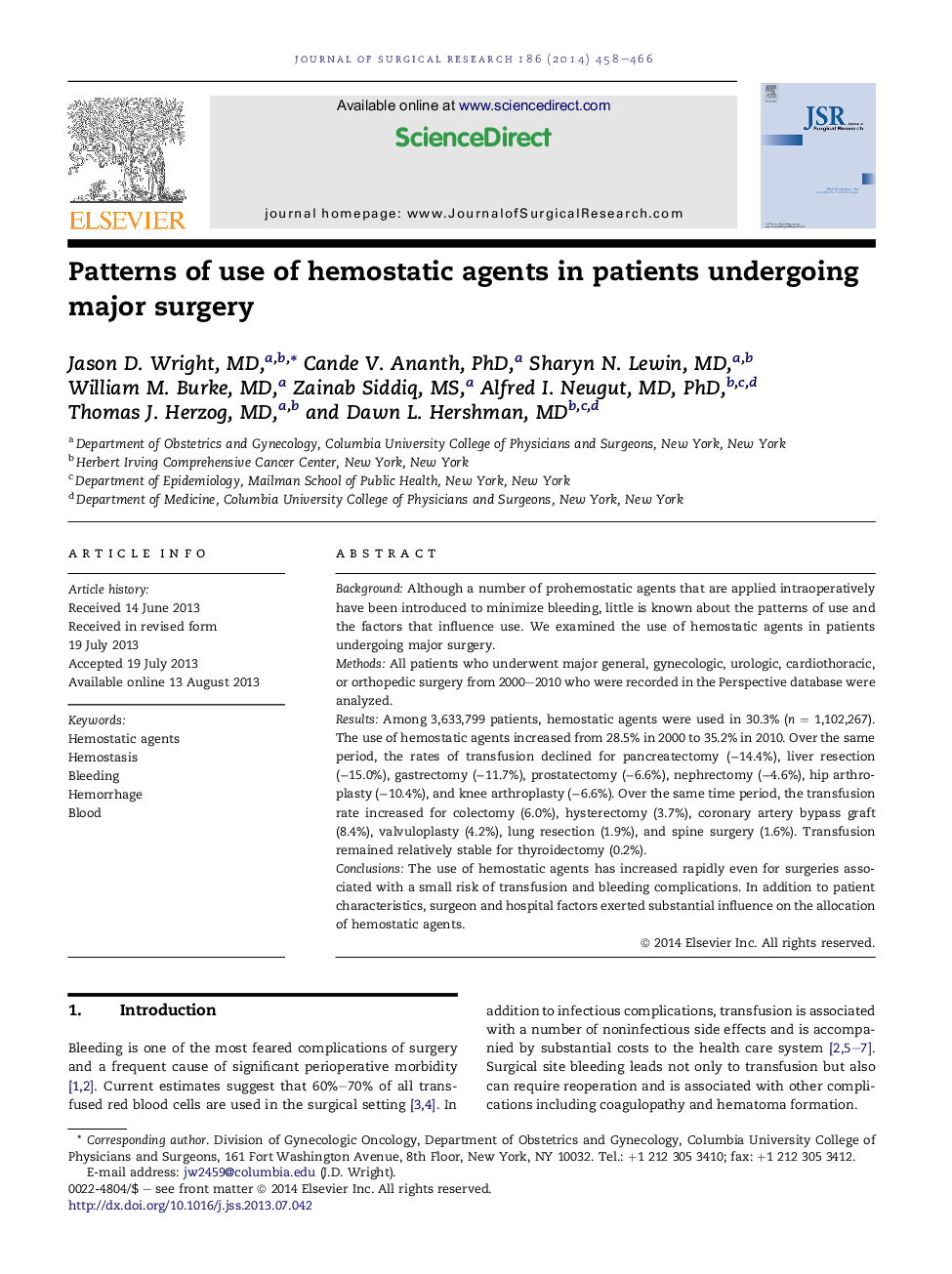| Article ID | Journal | Published Year | Pages | File Type |
|---|---|---|---|---|
| 6254250 | Journal of Surgical Research | 2014 | 9 Pages |
BackgroundAlthough a number of prohemostatic agents that are applied intraoperatively have been introduced to minimize bleeding, little is known about the patterns of use and the factors that influence use. We examined the use of hemostatic agents in patients undergoing major surgery.MethodsAll patients who underwent major general, gynecologic, urologic, cardiothoracic, or orthopedic surgery from 2000-2010 who were recorded in the Perspective database were analyzed.ResultsAmong 3,633,799 patients, hemostatic agents were used in 30.3% (n = 1,102,267). The use of hemostatic agents increased from 28.5% in 2000 to 35.2% in 2010. Over the same period, the rates of transfusion declined for pancreatectomy (â14.4%), liver resection (â15.0%), gastrectomy (â11.7%), prostatectomy (â6.6%), nephrectomy (â4.6%), hip arthroplasty (â10.4%), and knee arthroplasty (â6.6%). Over the same time period, the transfusion rate increased for colectomy (6.0%), hysterectomy (3.7%), coronary artery bypass graft (8.4%), valvuloplasty (4.2%), lung resection (1.9%), and spine surgery (1.6%). Transfusion remained relatively stable for thyroidectomy (0.2%).ConclusionsThe use of hemostatic agents has increased rapidly even for surgeries associated with a small risk of transfusion and bleeding complications. In addition to patient characteristics, surgeon and hospital factors exerted substantial influence on the allocation of hemostatic agents.
